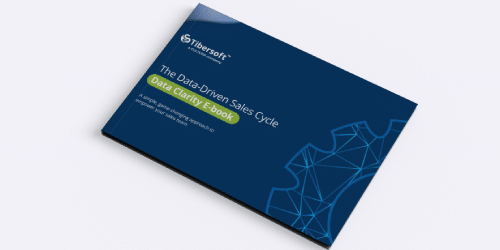In our recent blog post, we talked about how Insight-driven organizations differ from data-driven organizations, specifically in the foodservice manufacturing industry. We explored and defined what it means to be insight-driven – that is, curating and managing multiple sources of data to answer specific business questions and delivering them in a format appropriate for the decision being made.
Now we’ll explore one specific approach to insight-driven decision making, called the Jobs to be Done approach.
What is the Jobs to be Done approach, and what is it best for?
Historically, analytical interfaces have been built to maximize flexibility – the flexibility to transform data and view it in different ways. This results in trading off simplicity for depth and complexity, and the resulting interface ends up requiring a higher degree of technical knowledge to use. While this method still works effectively for an analytical team looking to get deep into the weeds of their data, it is not effective for less analytically inclined users in roles with rapid context switching or who only have a handful of critical analytical tasks they do often – in the foodservice world, one example of such a user base is field sales.
The Jobs to be Done approach involves identifying the necessary decisions in a task, initiative, or “job” within your organization, and delivering data insights that are specifically designed around those decisions. Using the Jobs to be Done concept has the dual effect of focusing your team and analytical resources on the right questions and producing relatively simple user interfaces for your end users.
That focus also encourages a simpler user interface design. Whereas most analytical user interfaces are intended to answer every possible type of question, or to help make every possible type of decision, an interface focused on a Job to be Done is intended only to help make one or two decisions.
If you are working with field sales or another similar role, the Jobs to be Done approach makes it much easier for even your end users to understand, and you’ll find a much higher rate of usage with less training as a result.
The Jobs to Be Done Approach Applied to Foodservice Manufacturers
Let’s say you have an initiative this year for your sales team to convert 10% of your existing customers to another cracker product. That initiative is your job to be done. Within that job, you have at least one decision that needs to be made by your sales team – which customers are the best opportunities to convert from a lower margin product to a higher margin product? Making that decision faster, easier, and more effective for your sales team represents a clear objective for your analytical resources to focus on.
This is just one of many examples of a Job to be Done. Here are a few more:
- Finding net new sales opportunities with location whitespace: Identifying net new business to go after.
- Retaining your existing customer base: Identifying at-risk business before it is lost.
- Weekly and quarterly performance reviews: What are the drags and drives of your sales activities?
- Call planning: Creating a call plan for the quarter.
- Product initiatives: Bringing new products to market.
Once a Job to be Done is identified, details about that job need to be uncovered in order to create the appropriate interface. Where is the user when they are doing that job? With whom are they with? What information do they need, how quickly do they need it, and in what format? What are they doing next, and what were they doing before? Getting a complete picture of your Jobs to be Done, from the perspective of the person doing that job, will improve the effectiveness of your interface.
How Tibersoft Can Help
Our team works closely with foodservice manufacturers to identify, understand and uncover the insights they need for their Jobs to be Done and present them in user-friendly, easy-to-interpret interface, making them readily available and actionable for their teams.





